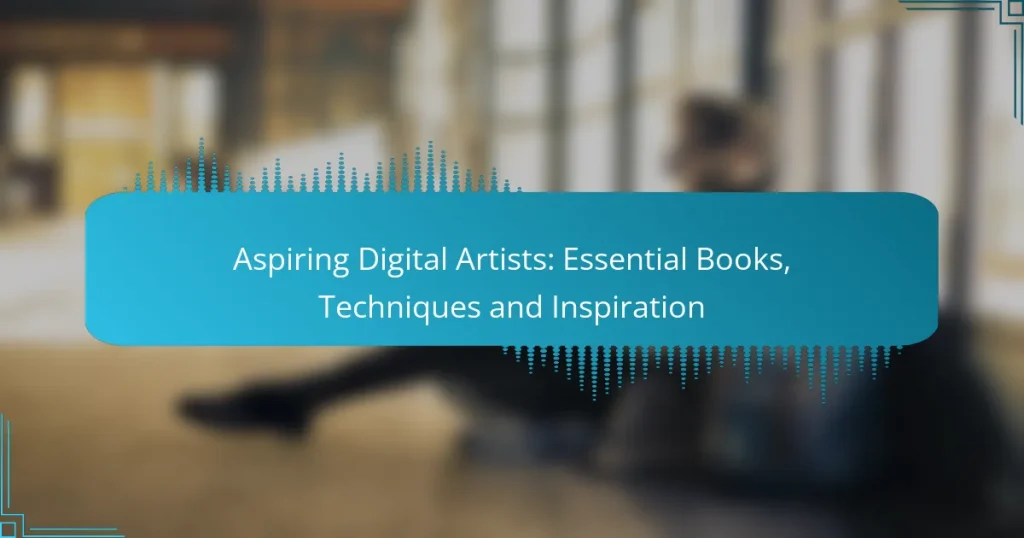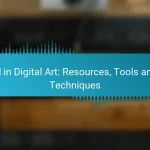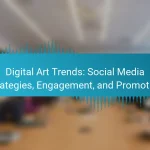For aspiring digital artists, exploring essential books that cover techniques, theory, and inspiration is crucial for developing their skills. Mastering foundational techniques such as layering, brush customization, and color theory will enhance both creativity and technical proficiency. Additionally, engaging with online communities and art challenges can provide valuable inspiration and fresh ideas for projects.

What Are the Best Books for Aspiring Digital Artists?
For aspiring digital artists, several books stand out as essential resources that cover techniques, theory, and inspiration. These books provide valuable insights into the digital art process, helping artists develop their skills and creativity.
“Digital Painting Techniques” by 3DTotal Publishing
This book is a comprehensive guide that covers various digital painting methods and styles. It features step-by-step tutorials from professional artists, making it suitable for beginners and experienced creators alike.
Readers can expect to learn about different software options, brush techniques, and color theory, all of which are crucial for effective digital painting. The book also includes tips on how to develop a unique artistic style.
“The Digital Artist’s Handbook” by David Hockney
David Hockney’s handbook is an insightful exploration of the digital art landscape, blending traditional techniques with modern technology. It emphasizes the importance of understanding the fundamentals of art while adapting to digital tools.
This book encourages artists to experiment with various mediums and approaches, providing practical exercises that foster creativity. Hockney’s perspective on the evolution of art in the digital age is particularly inspiring for newcomers.
“Creative Illustration” by Andrew Loomis
Andrew Loomis’s classic work on illustration remains relevant for digital artists today. It focuses on the principles of composition, color, and form, which are essential for creating compelling digital illustrations.
The book includes numerous examples and exercises that help artists grasp the concepts effectively. Loomis’s clear explanations make it a valuable resource for anyone looking to enhance their illustration skills.
“Drawing on the Right Side of the Brain” by Betty Edwards
Betty Edwards’s book is a foundational text that teaches artists to tap into their creative potential by shifting their perception of drawing. It emphasizes the importance of seeing shapes and relationships rather than just objects, which is crucial for digital art.
This book includes exercises that help develop observational skills and creativity, making it an excellent companion for digital artists seeking to improve their drawing abilities. Edwards’s techniques are applicable across various digital platforms and styles.
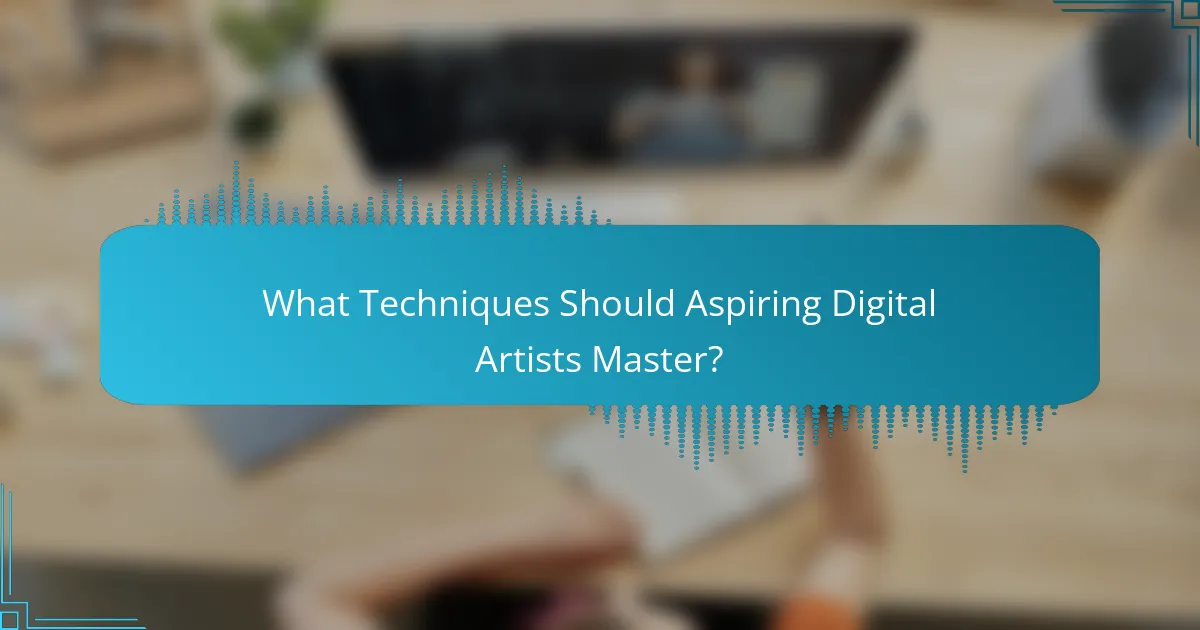
What Techniques Should Aspiring Digital Artists Master?
Aspiring digital artists should master techniques that enhance their creativity and technical skills, focusing on layering, brush customization, and color theory. These foundational skills will significantly improve the quality and depth of their artwork.
Layering Techniques
Layering techniques involve stacking multiple transparent layers to create depth and complexity in digital art. This method allows artists to work non-destructively, making it easy to adjust individual elements without affecting the entire piece.
To effectively use layers, consider organizing them by elements, such as background, midground, and foreground. This organization helps maintain clarity and control over your artwork. A common pitfall is overcrowding layers; aim for a balance that keeps your workspace manageable.
Brush Customization
Brush customization is crucial for achieving unique textures and effects in digital art. Most software offers options to modify brush size, shape, opacity, and dynamics, allowing artists to create brushes that suit their specific style.
Experiment with different settings to find what works best for your projects. For example, a soft round brush can be great for blending, while a textured brush can add interest to surfaces. Avoid relying solely on default brushes; developing your own can set your work apart.
Color Theory Application
Applying color theory is essential for creating harmonious and visually appealing artwork. Understanding concepts like the color wheel, complementary colors, and color harmony can significantly enhance your compositions.
When selecting colors, consider using a limited palette to maintain cohesion. Tools like Adobe Color can help you explore color combinations. A common mistake is using too many colors, which can lead to a chaotic look; instead, focus on a few key shades to create impact.
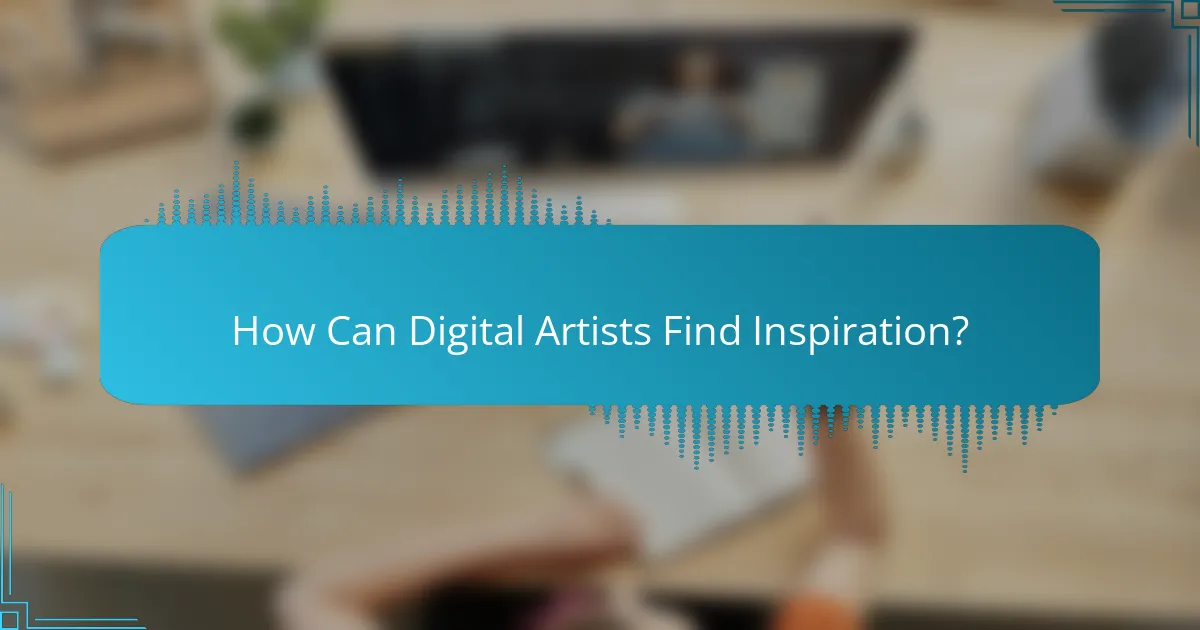
How Can Digital Artists Find Inspiration?
Digital artists can find inspiration through various channels, including online communities, social media, and art challenges. Engaging with these resources can spark creativity and provide fresh ideas for projects.
Online Art Communities
Online art communities are platforms where artists share their work, receive feedback, and connect with others. Websites like DeviantArt, ArtStation, and Behance allow users to showcase their portfolios and explore the work of fellow artists.
Joining these communities can help artists discover new techniques and styles. Participating in forums or discussion groups can also provide valuable insights and support from peers.
Social Media Platforms
Social media platforms such as Instagram, Pinterest, and TikTok are excellent sources of inspiration for digital artists. These platforms allow users to follow artists, view their latest creations, and engage with trending art styles.
Using hashtags related to digital art can help artists find specific themes or movements. Additionally, creating a dedicated art account can foster connections and attract feedback from a wider audience.
Art Challenges and Competitions
Art challenges and competitions encourage artists to create within specific themes or timeframes, fostering creativity and discipline. Events like Inktober or the 30-Day Drawing Challenge provide prompts that can inspire new artwork.
Participating in competitions can also enhance an artist’s visibility and credibility. Many competitions offer prizes or exposure, making them worthwhile opportunities for aspiring digital artists.

What Digital Tools Are Essential for Artists?
Essential digital tools for artists include software that enhances creativity, facilitates design, and streamlines workflow. The right tools can significantly impact the quality of artwork and the efficiency of the creative process.
Adobe Photoshop
Adobe Photoshop is a leading software for digital artists, known for its versatility and powerful features. It offers a wide range of tools for photo editing, digital painting, and graphic design, making it suitable for both beginners and professionals.
Key features include layers, brushes, and filters, which allow artists to manipulate images and create complex compositions. However, the subscription model may be a consideration for some, as it requires ongoing payments rather than a one-time purchase.
Procreate
Procreate is a popular app for digital painting, particularly among iPad users. Its intuitive interface and extensive brush library make it ideal for artists who prefer a hands-on approach to drawing and painting.
Procreate supports high-resolution canvases and offers features like layering and animation, which enhance creative possibilities. It is a one-time purchase, making it a cost-effective choice for many aspiring artists.
Corel Painter
Corel Painter is designed specifically for digital painting, offering a wide array of realistic brushes and textures that mimic traditional media. This software is favored by artists who want to replicate the look and feel of natural painting techniques.
While it provides extensive customization options, the learning curve can be steep for new users. Corel Painter typically requires a one-time purchase, but it may also offer subscription options, depending on the version.
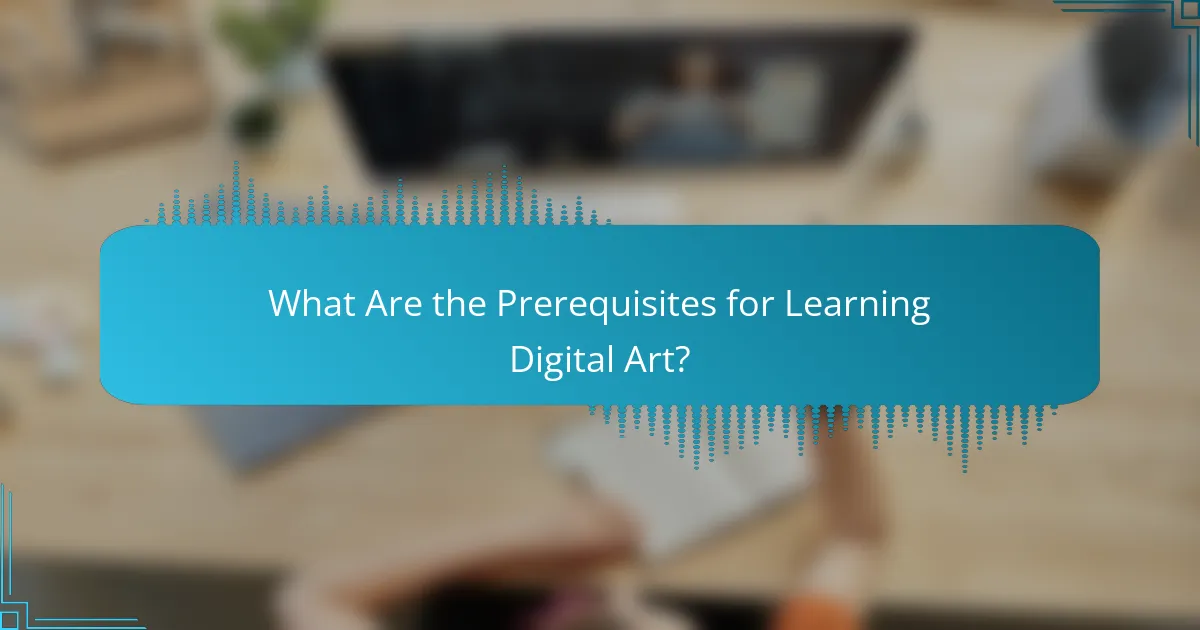
What Are the Prerequisites for Learning Digital Art?
To learn digital art effectively, aspiring artists should develop basic drawing skills and gain an understanding of digital software. These foundational elements will enhance their ability to create compelling artwork using digital tools.
Basic Drawing Skills
Basic drawing skills are essential for any digital artist, as they form the backbone of visual expression. Mastering fundamental techniques such as perspective, shading, and anatomy will significantly improve your digital artwork.
Practice sketching regularly to build muscle memory and develop your style. Consider using reference images to understand proportions and details better, which can be applied in digital formats.
Understanding of Digital Software
Familiarity with digital art software is crucial for creating and editing artwork. Popular programs like Adobe Photoshop, Corel Painter, and Procreate offer various tools and features tailored for artists.
Start by exploring the basic functions such as brushes, layers, and color palettes. Many software options provide tutorials and community forums that can help you learn specific techniques and troubleshoot common issues.
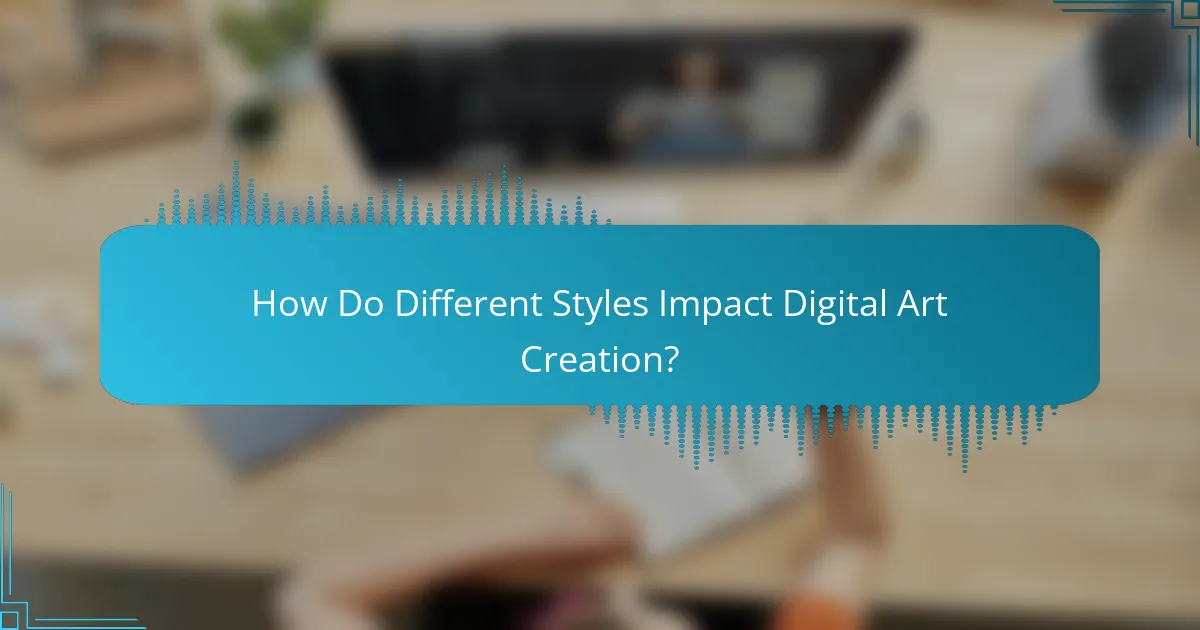
How Do Different Styles Impact Digital Art Creation?
Different styles significantly influence the process and outcome of digital art creation. Each style brings unique techniques, tools, and emotional expressions, shaping how artists approach their work and engage with their audience.
Understanding Art Styles
Art styles encompass various techniques and visual languages that artists use to convey their ideas. Common styles include realism, impressionism, abstract, and surrealism, each requiring distinct approaches to color, form, and composition. Familiarizing yourself with these styles can help you identify which resonates with your creative vision.
Techniques for Different Styles
Each art style employs specific techniques that can enhance your digital artwork. For instance, realism often requires attention to detail and accurate proportions, while abstract art may focus on color and shape without representing reality. Experimenting with different techniques can help you find your preferred style and improve your skills.
Choosing the Right Tools
The tools you use can greatly affect the style of your digital art. Software like Adobe Photoshop or Procreate offers a range of brushes and effects suitable for various styles. Selecting the right tools, such as texture brushes for realism or vector tools for clean lines in graphic styles, can enhance your artistic expression.
Finding Inspiration Across Styles
Inspiration can be drawn from various art styles, helping you develop a unique voice. Explore galleries, online platforms, or art communities to see how different artists interpret styles. Engaging with diverse influences can spark new ideas and encourage experimentation in your own work.
